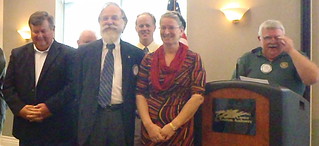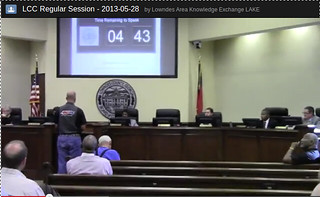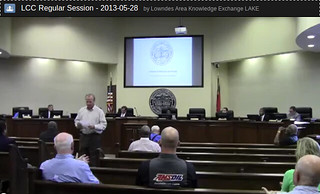Jack Kingston (GA-01) slipped the Monsanto rider into a recent law,
requiring “the Secretary of Agriculture to grant a temporary permit for
the planting or cultivation of a genetically engineered crop, even if a
federal court has ordered the planting be halted until an Environmental
Impact Statement is completed”.
Alexis Baden-Mayer wrote for AlterNet 8 July 2012,
The “Monsanto Rider”: Are Biotech Companies About to Gain Immunity From Federal Law?
 Whom do we have to thank for this sneak attack on USDA safeguards?
The agricultural sub-committee chair Jack Kingston (R-Ga.) —
who not coincidentally was voted “legislator of the year for
2011-2012” by none other than the Biotechnology Industry
Organization, whose members include Monsanto and DuPont.
As reported by Mother Jones,
the Biotechnology Industry Organization
declared Kingston a “champion of America’s biotechnology industry”
who has
“helped to protect funding for programs essential to the survival of
biotechnology companies across the United States.”
Whom do we have to thank for this sneak attack on USDA safeguards?
The agricultural sub-committee chair Jack Kingston (R-Ga.) —
who not coincidentally was voted “legislator of the year for
2011-2012” by none other than the Biotechnology Industry
Organization, whose members include Monsanto and DuPont.
As reported by Mother Jones,
the Biotechnology Industry Organization
declared Kingston a “champion of America’s biotechnology industry”
who has
“helped to protect funding for programs essential to the survival of
biotechnology companies across the United States.”
The Biotechnology Industry Organization’s
PR about that award of 24 April 2012 says down at the bottom:
Photos of the award presentation are available upon request.
 If that award is such an honor,
why are they hiding the pictures of Jack Kingston receiving it?
If Monsanto’s products are so great, why don’t they label them
so we can tell which they are?
Why did a French court
just uphold a conviction of Monsanto
for poisoning a French farmer?
Why does Monsanto
oppose independent GMO research?
And why did
hundreds of thousands of people just march against Monsanto?
If that award is such an honor,
why are they hiding the pictures of Jack Kingston receiving it?
If Monsanto’s products are so great, why don’t they label them
so we can tell which they are?
Why did a French court
just uphold a conviction of Monsanto
for poisoning a French farmer?
Why does Monsanto
oppose independent GMO research?
And why did
hundreds of thousands of people just march against Monsanto?
 Could it be because of
liver and kidney damage, cancer and birth defects, pollution of water and air,
systematic gaming of the patent system,
perversion of the regulatory system,
and corruption of the legislative system?
Could it be because of
liver and kidney damage, cancer and birth defects, pollution of water and air,
systematic gaming of the patent system,
perversion of the regulatory system,
and corruption of the legislative system?
Speaking of corruption,
Kingston has put the survival of biotechnology companies above
the survival of farmers and the health of the American people.

Jack Kingston, voted Biotech “Legislator of the Year.” Responsible for adding the Monsanto Immunity Rider to the farm bill (H.R. 5973, Section 733). Tell him what you think!
www.facebook.coim/jackkingston/, 202-225-5821, 912-352-0101
-jsq
I sort of wish that I had been able to observe the executive session where you discussed the pending lawsuit against Deep South Sanitation. I wonder who asked the question “Is it beneficial to all concerned?” I wonder which one of you said “This will really attract people to start or relocate business in our county when we sue one of our local business owners.”
 Bill Slaughter and Gretchen Quarterman were inducted into Valdosta
Rotary on the same day (12 September 2012); that’s John Page,
already a member, standing behind them.
County Attorney Walter Elliott is also a member.
The Rotary Continue reading
Bill Slaughter and Gretchen Quarterman were inducted into Valdosta
Rotary on the same day (12 September 2012); that’s John Page,
already a member, standing behind them.
County Attorney Walter Elliott is also a member.
The Rotary Continue reading 














